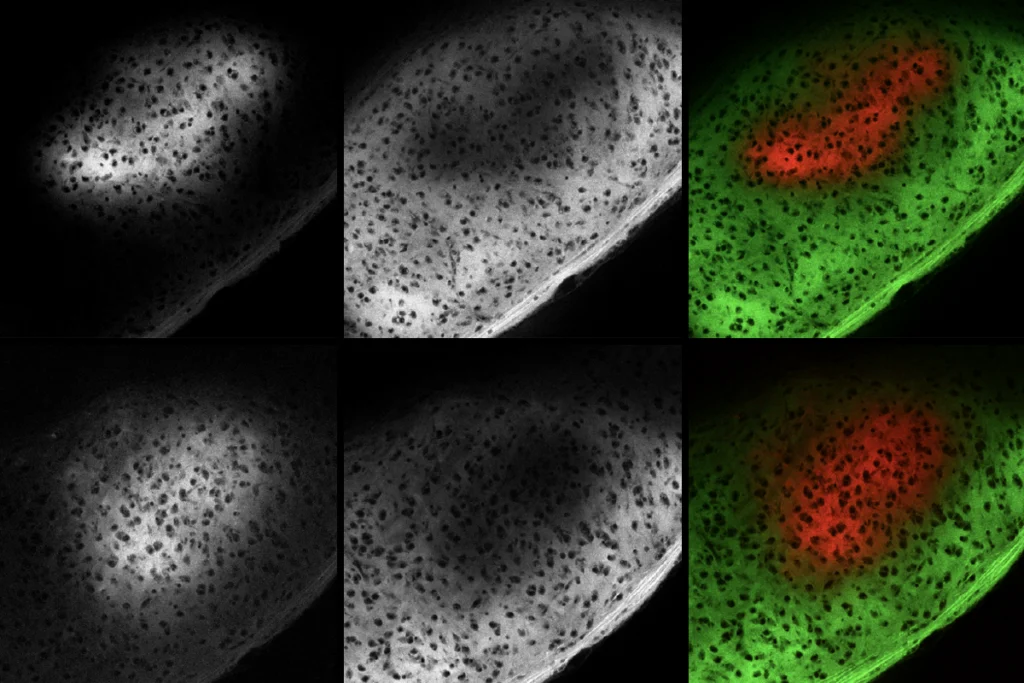Sometimes in neuroscience, as in fashion, what’s old becomes new again. Consider the glia limitans superficialis (GLS), the thin layer of cells that covers the brain and spinal cord just beneath the protective meninges. More than 100 years ago, Swedish anatomist Magnus Gustaf Retzius discovered that astrocytes form this seemingly impermeable layer, aligning their cell bodies along the brain’s surface and shooting their bushy processes into the cortex below—a pattern seen in drawings of Golgi-stained tissue from cats, dogs, rabbits and humans.
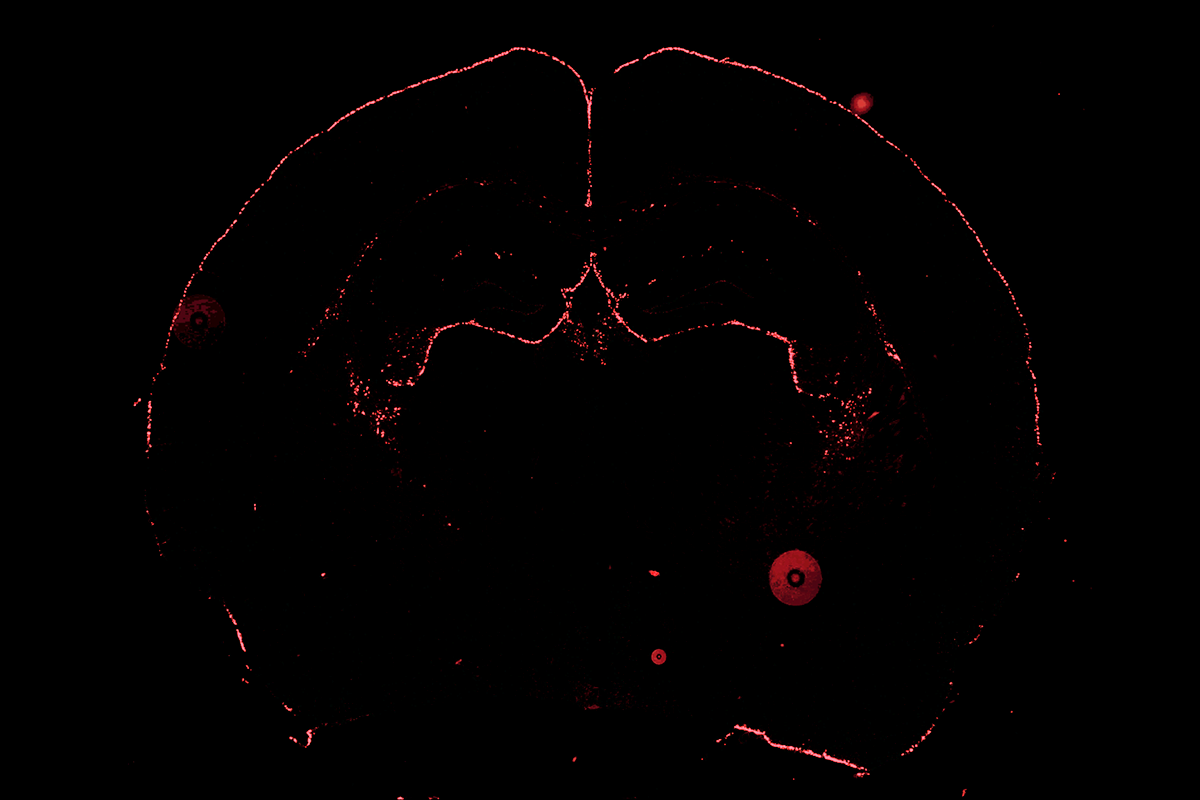
Unexpected astrocyte gene flips image of brain’s ‘stalwart sentinels’
The genetic marker upends the accepted orientation of non-star-like astrocytes in the glia limitans superficialis.
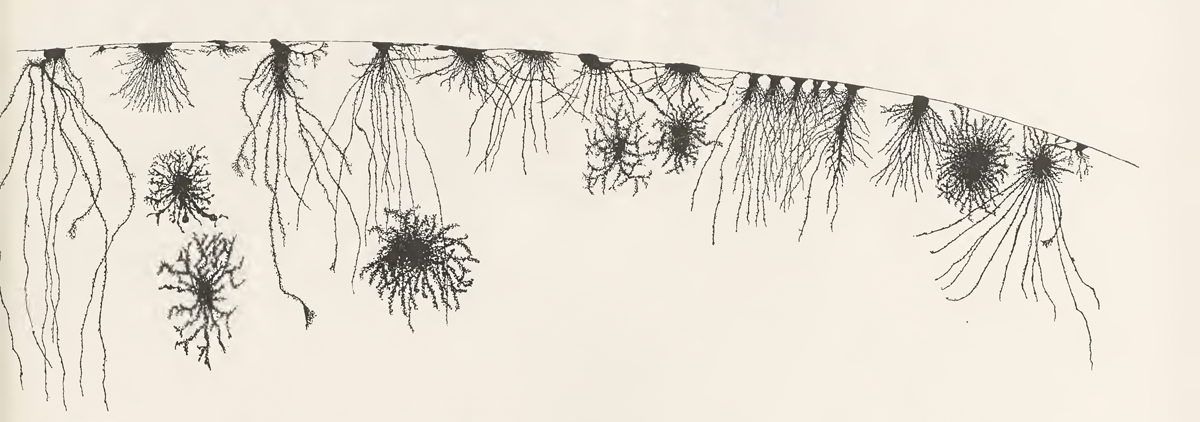
But in the 20th century, this picture flipped upside down: Diagrams in textbooks as recent as 2023, for example, depict GLS astrocytes with their cell bodies instead rooted in the cortex and their processes propped against the meninges, forming the sheath. In place of pathology slides, these results identified astrocytes based on their expression of astrocyte-specific genes, such as GFAP, which flags astrocyte bodies in the cortex.
New evidence from 3D light-sheet microscopy turns the picture right side up again. It reveals “a sea of cell bodies that cover the brain surface, absolutely beautiful,” in a variety of species, says Philip Hasel, group leader at the UK Dementia Research Institute in Edinburgh, who led the work, which was published in February in Cell Reports. The results, based on a reanalysis of existing data from zebrafish, mice, macaques and humans, jibe with evidence from similar reports from the past decade that “no one has listened to,” Hasel says. The new study reveals that GLS astrocytes have a unique genetic profile and are located only on the brain’s surface.
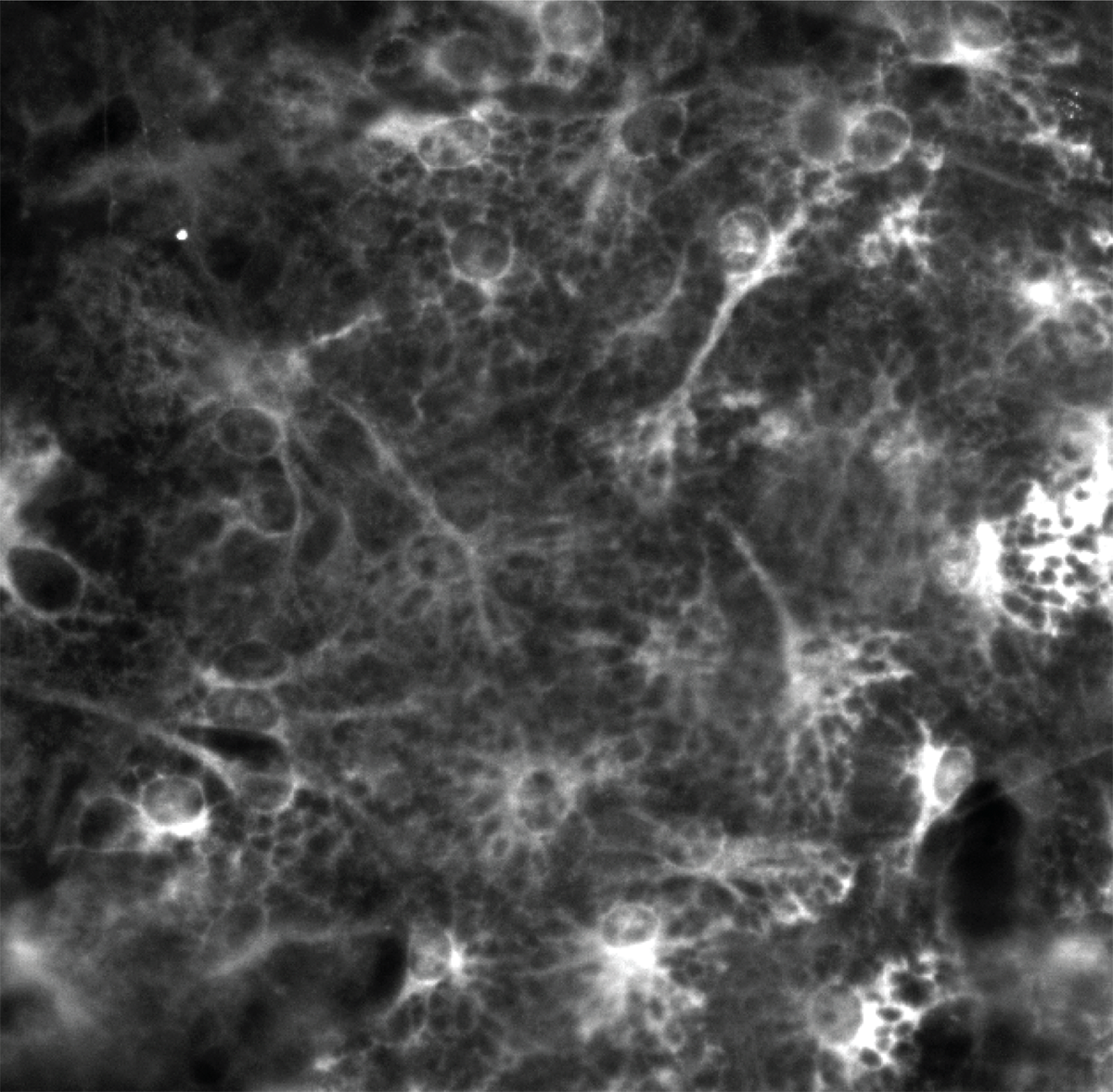
These “stalwart sentinels” lack the typical star shape of other astrocytes, says study investigator Shane Liddelow, associate professor of neuroscience, physiology and ophthalmology at New York University. Instead, they resemble umbrellas, with a single process shooting down into the brain like a handle.
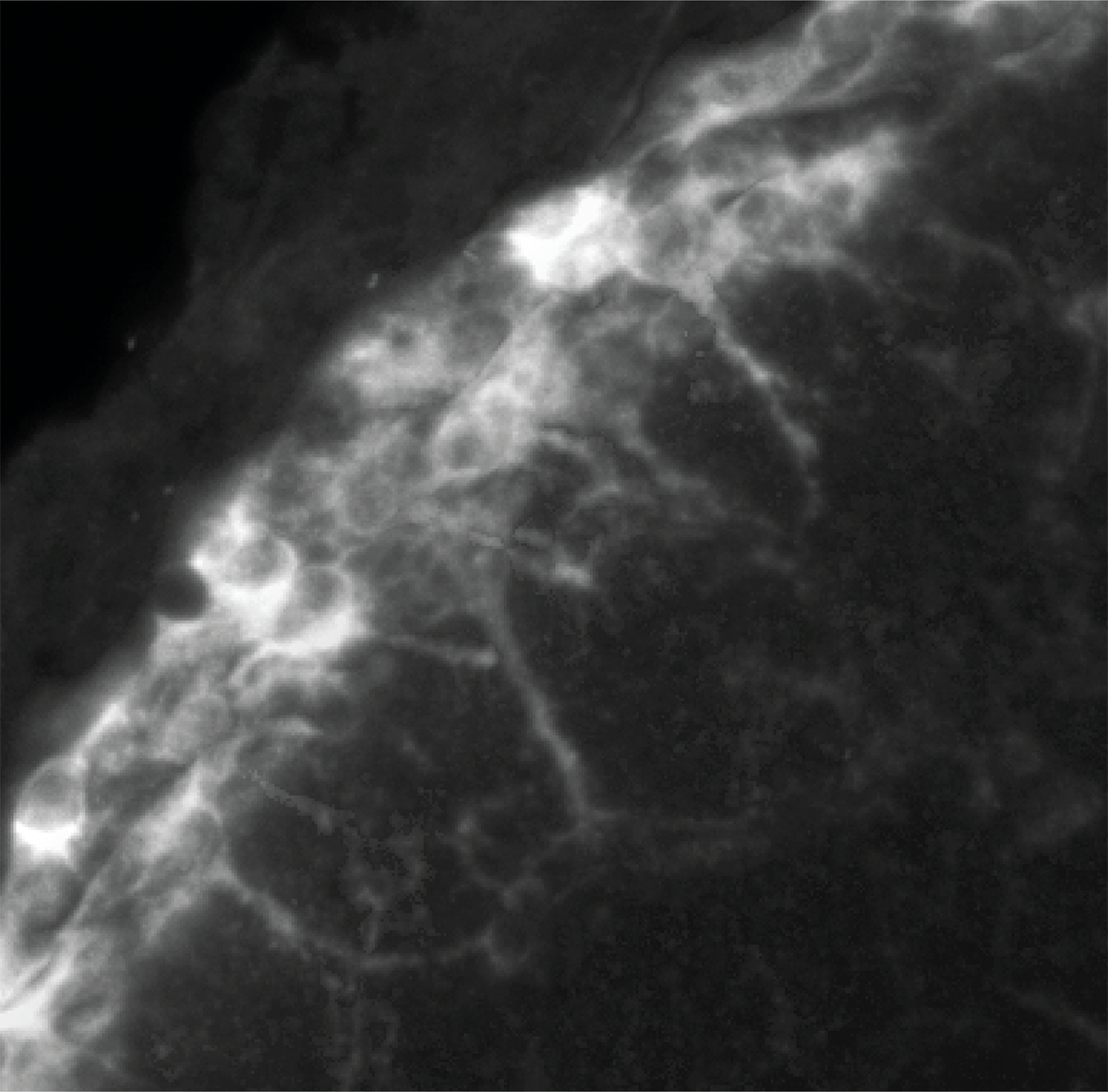
The results demonstrate that researchers should look beyond GFAP when studying astrocyte gene expression, Hasel says. GLS astrocytes in mice instead express high levels of the gene myocilin (MYOC), the new study shows, so staining for GFAP won’t catch them. Hasel says his team doesn’t yet know what the gene does.
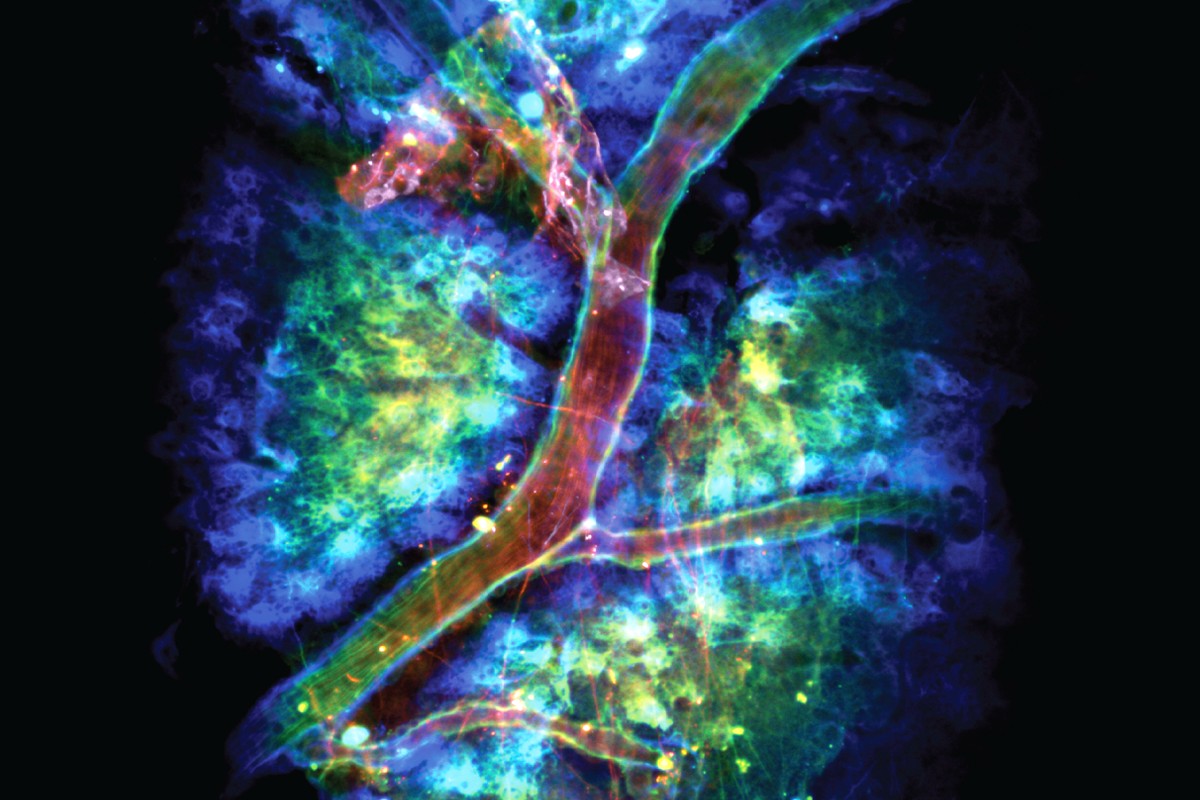
Farther down the evolutionary ladder, astrocytes with high expression of MYOC line the spinal cord of zebrafish and show the same morphology, with the cell body at the surface and processes reaching into the spinal cord.
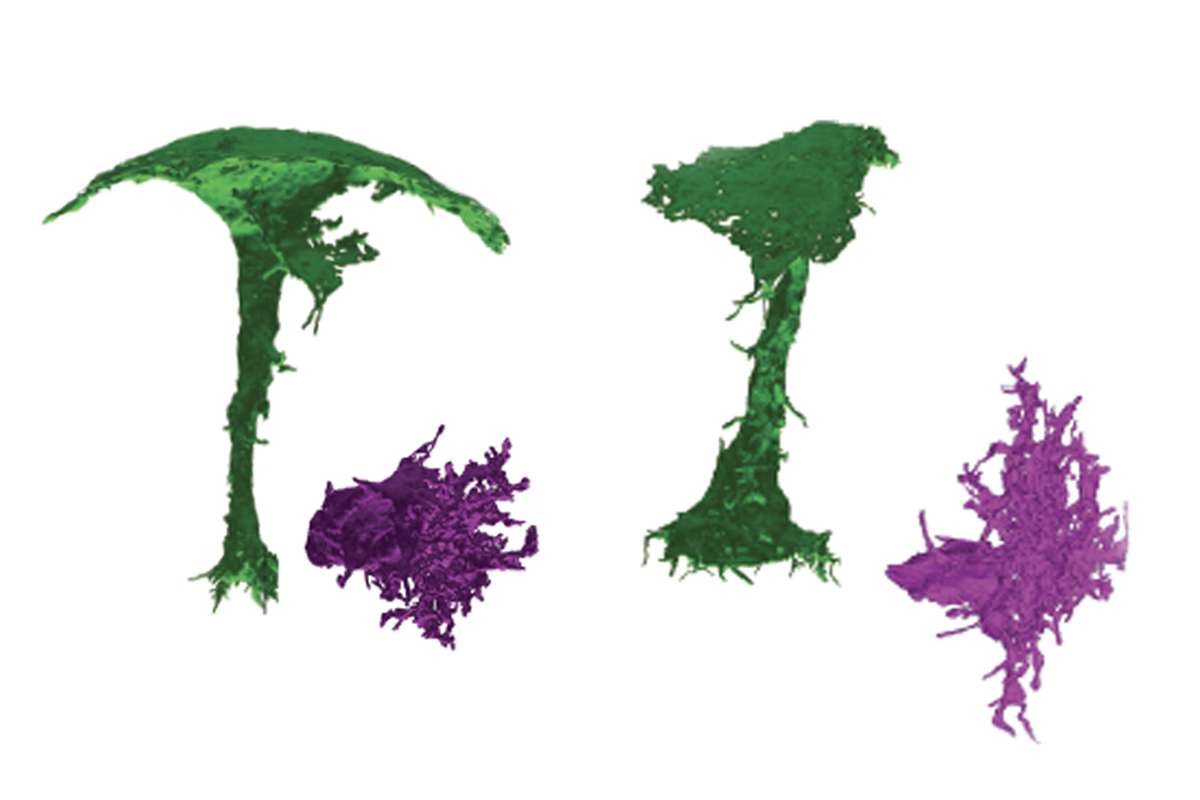
And moving up the evolutionary ladder, MYOC-rich astrocytes also coat the surface of the macaque brain and the human brain.

In the mouse brain, the processes of these astrocytes extend hundreds of microns down into the cortex, but the team doesn’t yet know how this affects their function. The processes might send danger signals from the surface deep into the brain, or sniff out any intruders that have made it through, Liddelow says.
And the astrocytes are embedded in a thick layer of laminin, the team found, which could act as a protective mesh. This padding might explain why, in previous studies, circulating immune cells were found to penetrate the brain’s meninges and then apparently bounce off the brain itself. GLS astrocytes also display a gene-expression profile similar to that of an internal astrocyte reacting to a pathogen, suggesting they are already primed for action.
The new study, which entirely leveraged preexisting datasets, shows that “combining our efforts across the field can be really critical” for making new discoveries, says Sarah Ackerman, assistant professor of pathology and immunology at the Washington University in St. Louis, who was not involved in the work.
The study also demonstrates that astrocytes are even more heterogeneous than the field previously suspected, Ackerman says. It’s a lesson “to not discount something as not being an astrocyte just because of what it looks like.”
Recommended reading
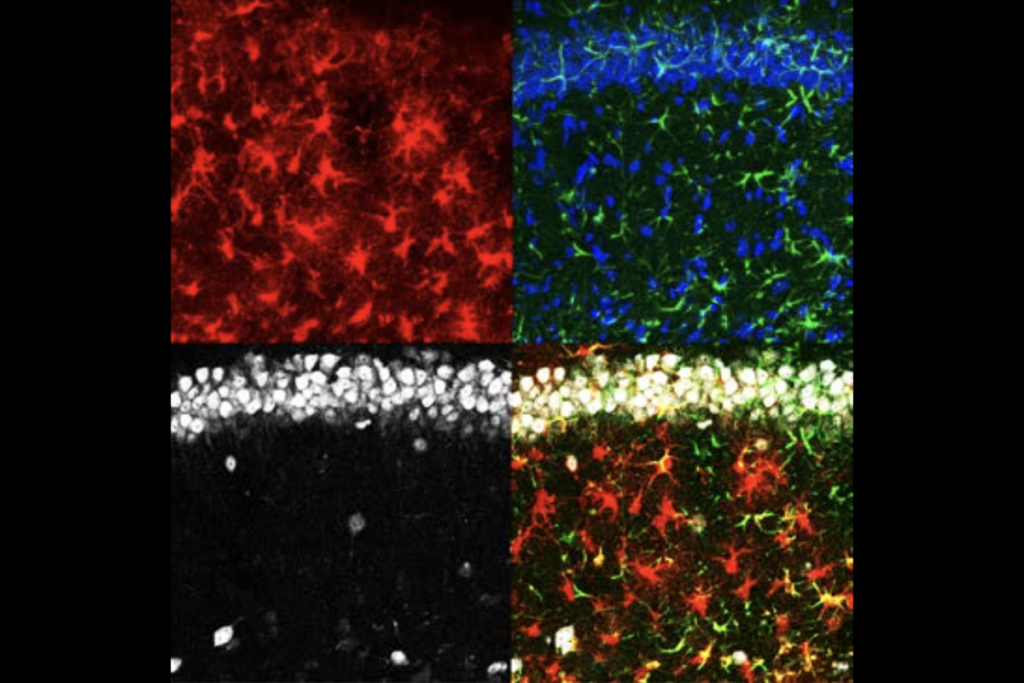
Astrocytes sense neuromodulators to orchestrate neuronal activity and shape behavior
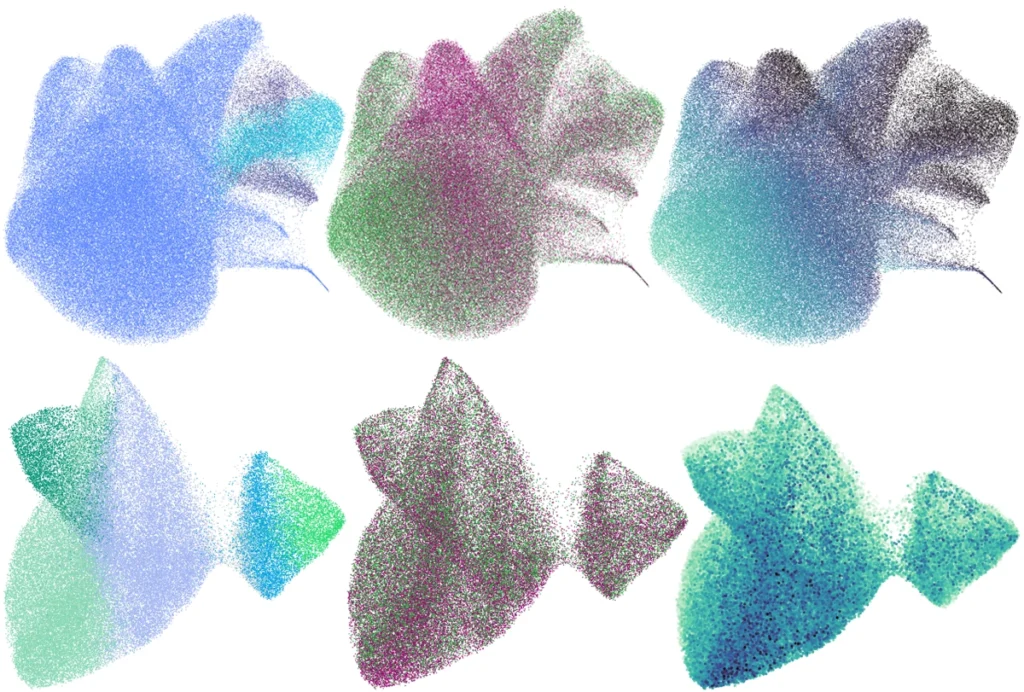
‘SNAP’ dance of astrocytes and neurons falls out of step with age, disease
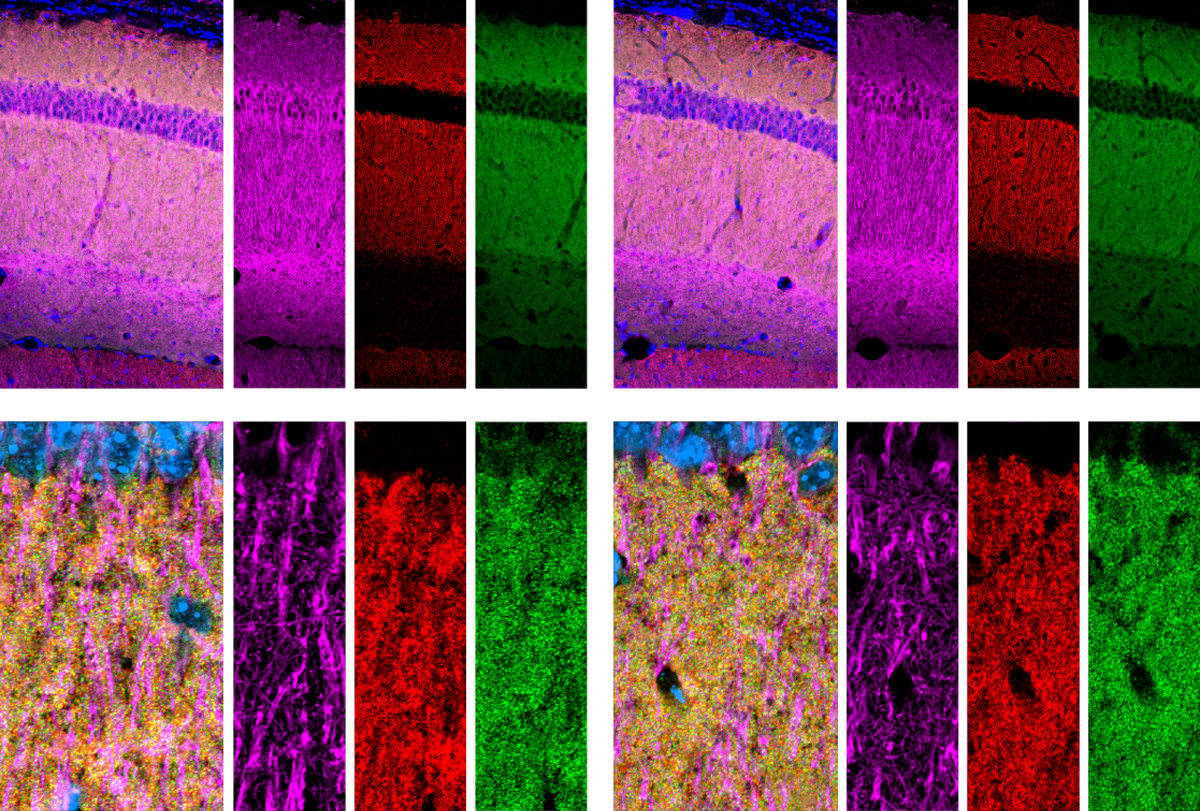
Dispute erupts over role of sticky proteins in astrocytes
Explore more from The Transmitter
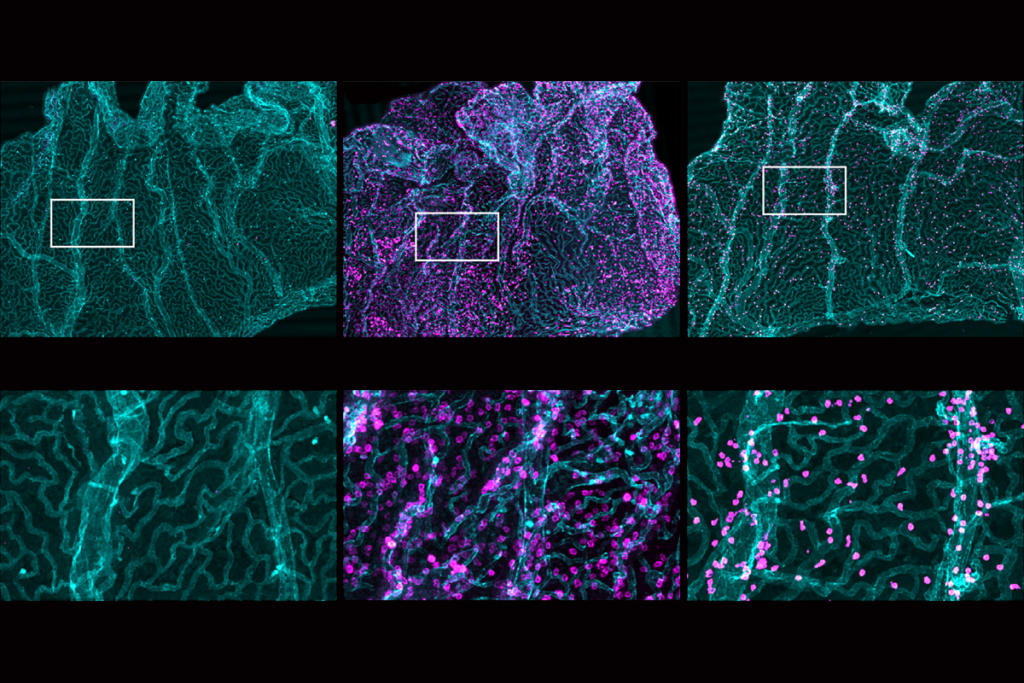
Immune cell interlopers breach—and repair—brain barrier in mice
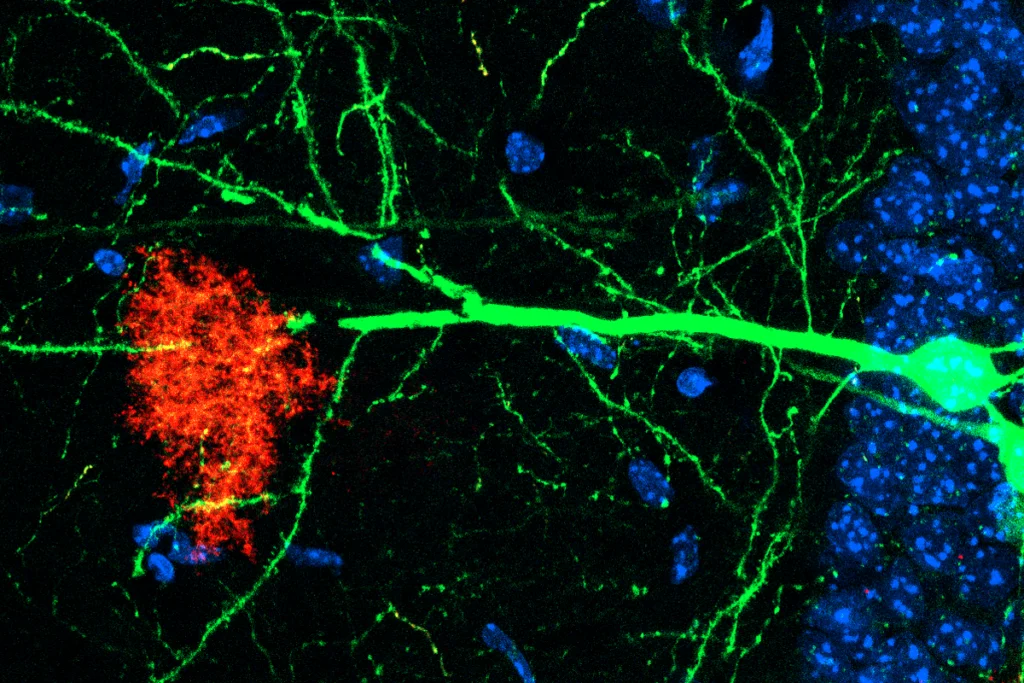
Astrocytes star in memory storage, recall
